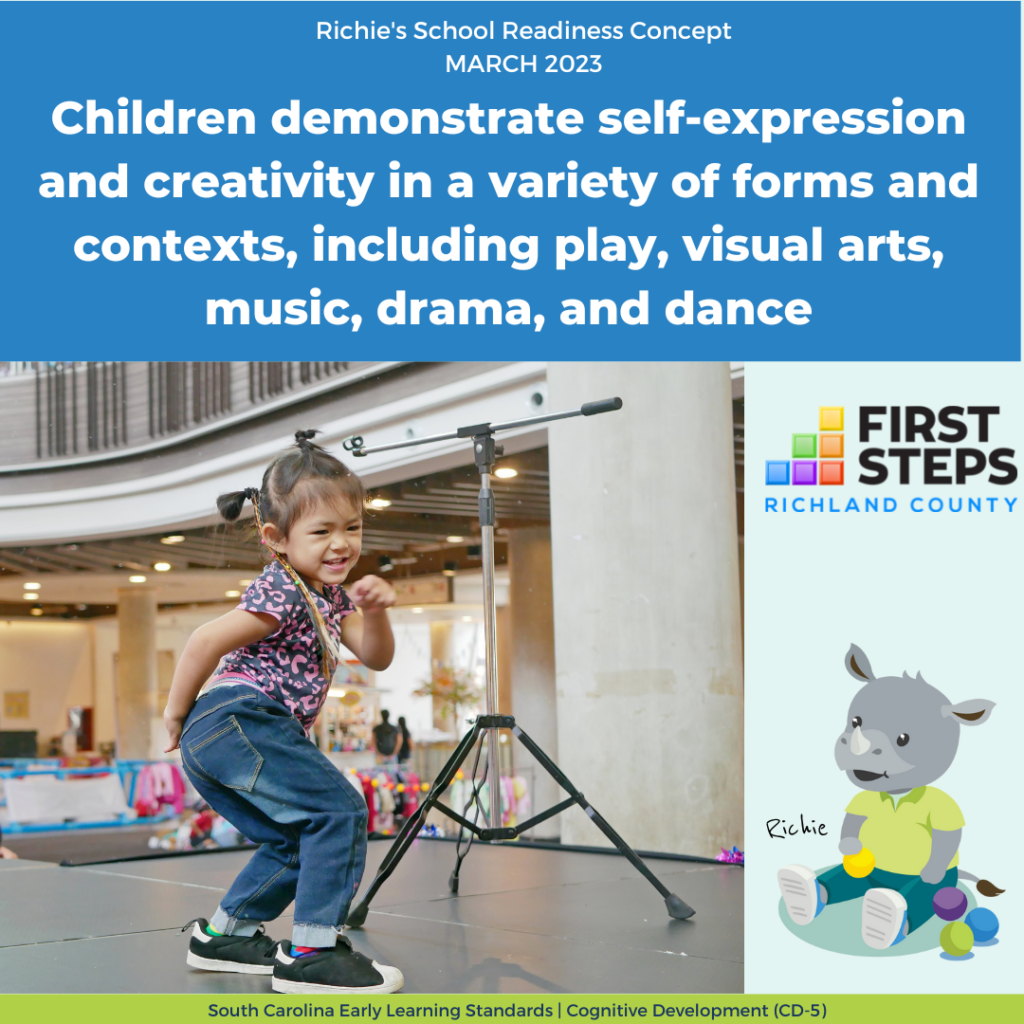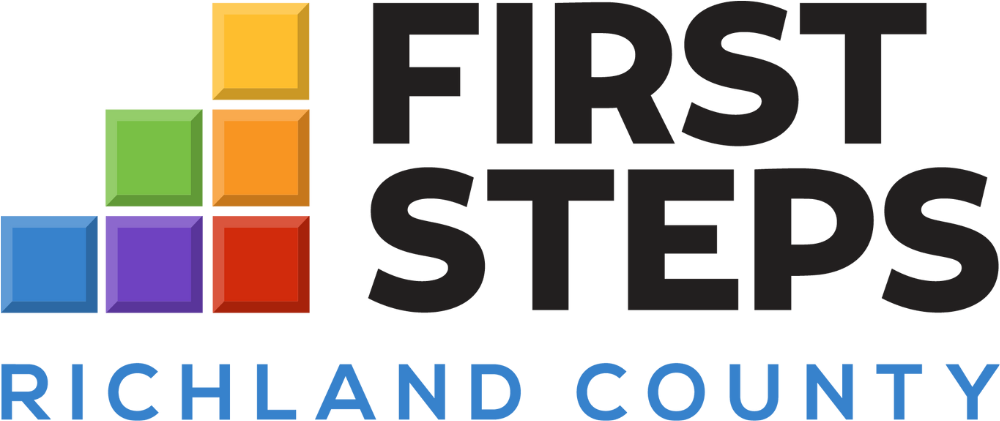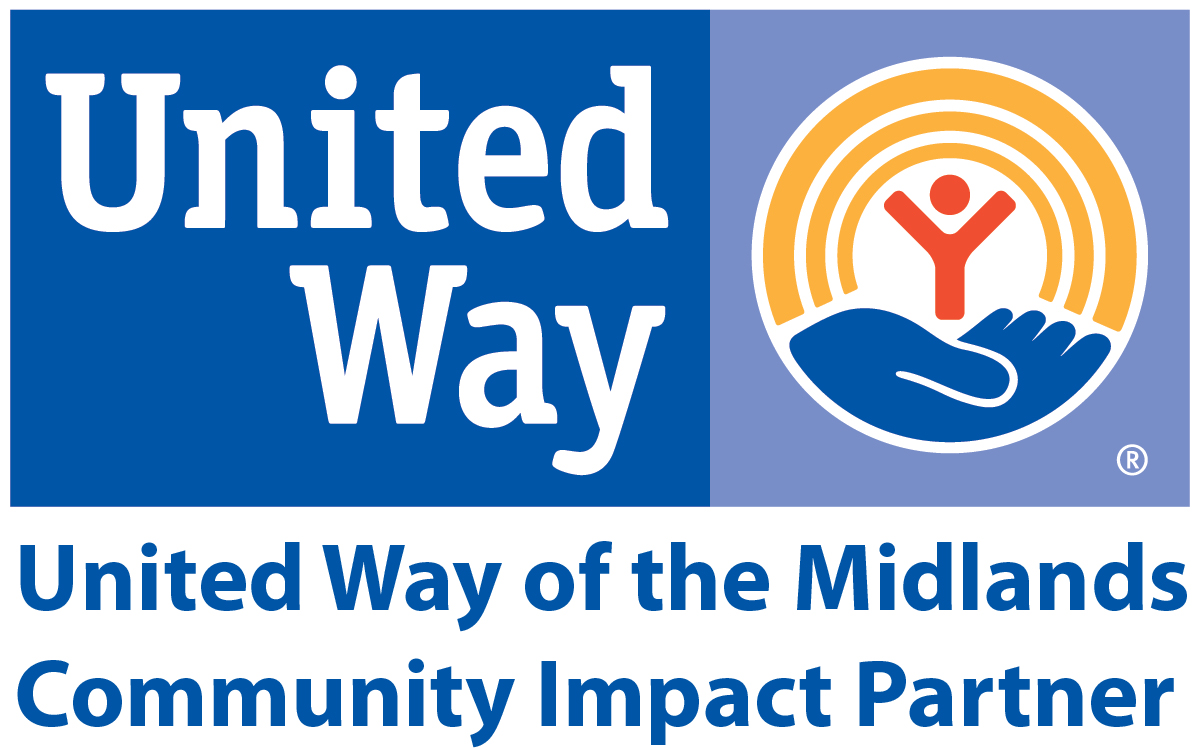
Each month, Richland First Steps selects one school readiness goal from the SC Early Learning Standards (SCELS) to spotlight throughout our programs for children, families, and child care providers.
This month’s concept comes from the Cognitive Development domain of the SCELS. Like all of the standards, there are developmental indicators that show a child’s progress on this goal at each stage:
Infants (Birth to 12 months)
- Use toys and household objects in a variety of different ways during play (wave, scrunch, then throw scarf).
- Explore sensory properties of art media (smear paint, pat and pound dough).
- Make a variety of sounds with simple instruments, toys, and their own voice.
- Express themselves by moving their bodies (wave arms when excited, hug soft toy).
Younger Toddlers (8 to 21 months)
- Use hats and clothes for dress-up make-believe.
- Explore art materials freely (make marks, squeeze clay, tear paper).
- Use materials purposefully to create sounds (bang blocks together, ring bell, shake can to make contents jingle).
- Move to music in their own way.
Older Toddlers (18 to 36 months)
- Recreate familiar scenes using play materials, language, and actions.
- Experiment and create art with clay, crayons, markers, paint, and collage materials.
- Make up simple nonsense songs, sign, chant, and dance (sing “la-la-la-la” on two pitches, twirl around and fall down, “march” by lifting knees high).
- Express ideas and feelings through music, movement, and dance.
Younger Preschoolers (36 to 48 months)
- Choose to participate and express themselves through a variety of creative experiences, such as art, music, movement, dance, and dramatic play.
- Show creativity and imagination when using materials and assuming roles during pretend play.
- Explore the properties of art materials and use them with purpose to draw, paint, sculpt, and create in other ways.
- Show awareness of different musical instruments, rhythms, and tonal patterns as they make music or participate in music activities.
- Show awareness of various patterns of beat, rhythm, and movement through music and dance activities.
Older Preschoolers (48 to 60+ months)
- Choose to participate and express themselves through a variety of creative experiences, such as art, music, movement, dance, and dramatic play.
- Plan and act out scenes based on books, stories, everyday life, and imagination.
- Plan and complete artistic creations such as drawings, paintings, collages, and sculptures.
- Recall and imitate different musical tones, rhythms, rhymes, and songs as they make music or participate in musical activities (clap previous beat to new song).
- Recall and imitate patterns of beat, rhythm, and movement as they create dances or participate in movement and dance activities.
Learn more:

